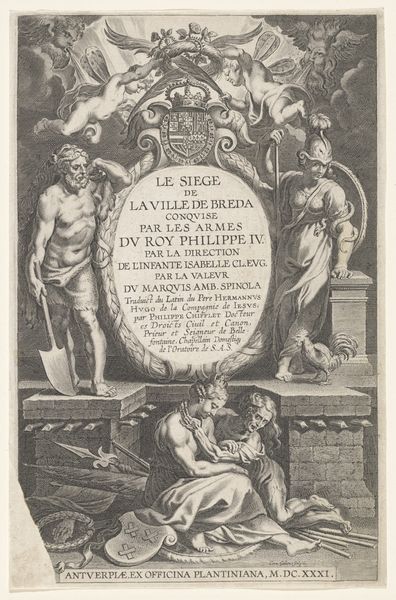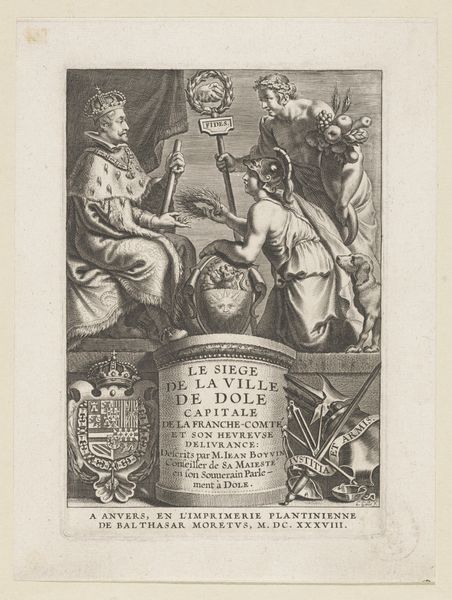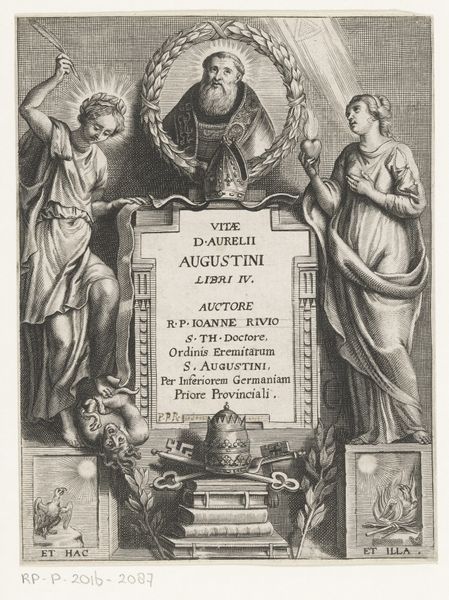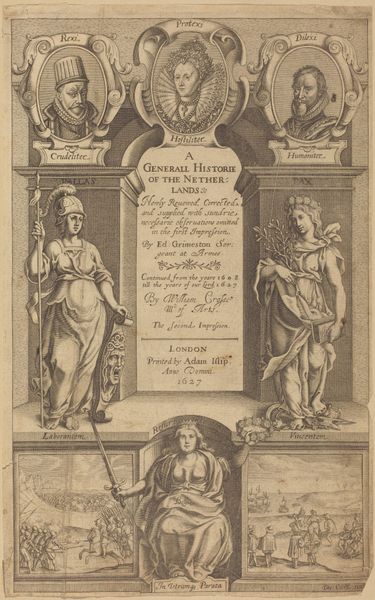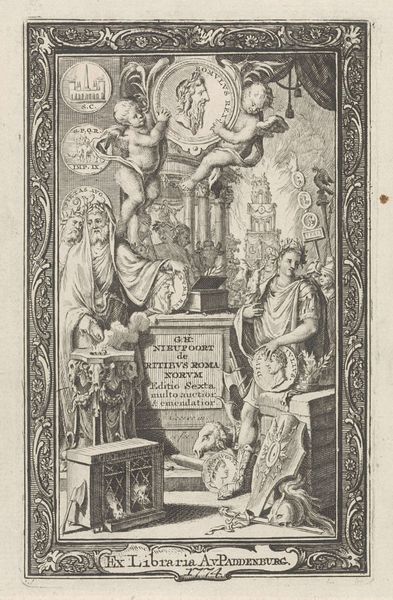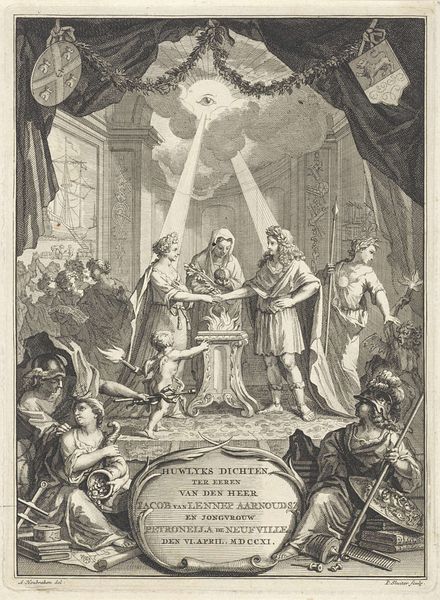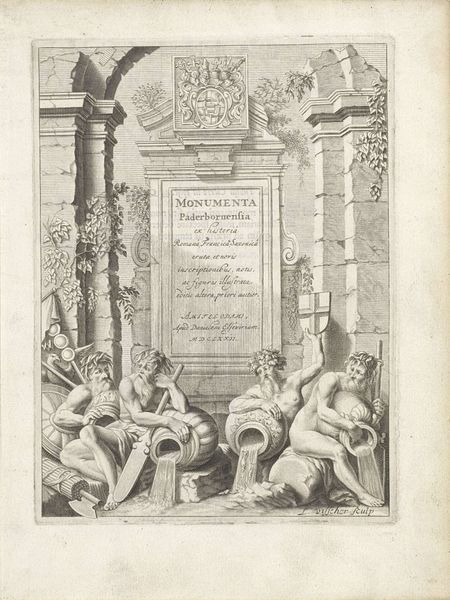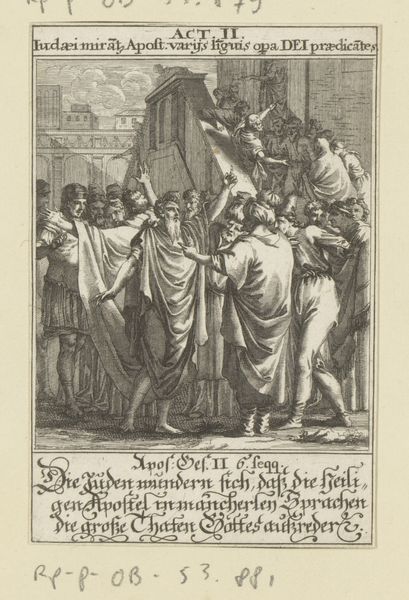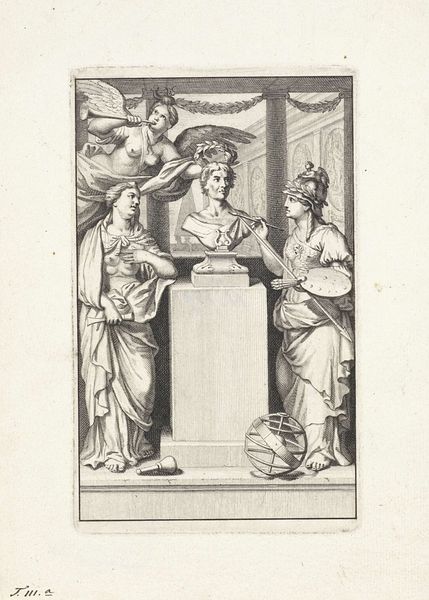
print, engraving
#
allegory
#
baroque
# print
#
pen illustration
#
old engraving style
#
pen work
#
history-painting
#
engraving
Dimensions: height 242 mm, width 156 mm
Copyright: Rijks Museum: Open Domain
Curator: There's something both grandiose and slightly unnerving about this print, wouldn't you agree? Editor: Absolutely. At first glance, the sheer density of symbolism is overwhelming. It feels like peering into a meticulously crafted, if somewhat rigid, dreamscape. Curator: It's titled "Allegory on the Old and New Testament," made sometime between 1651 and 1679 by Abraham de Blois, a Dutch artist of the Baroque period. And you can find it in the Rijksmuseum collection today. Look how Blois represents the Old and New Testaments via these figures—the figure with the scroll of laws and the sword seems a representation of the Old Testament, right? It is powerful, unbending, holding authority with force and the strict guidance from religious text. And then on the right, the softer allegory of the New Testament…holding the olive branch as an invitation for a new contract, an embrace. Editor: I appreciate you pointing out those key details! Placing this work in the context of its time, what strikes me is how it attempts to synthesize complex religious and political ideologies. Look closely at the woman representing the Old Testament with that commanding sword…we might see her as emblematic of religious law and tradition exerting its power. Meanwhile, the more gentle figure representing the New Testament seems aligned with emerging humanitarian values emphasizing grace and compassion. The halos, the stone tablets… even the title is in numerous languages all on one symbolic plane. Curator: And consider the pen work! It’s engraving but looks almost drawn. The shadows give them so much depth! Almost theatrical lighting to emphasise the weight of scripture and the lightness of divinity, perhaps? Editor: I can agree with the sentiment, and the emphasis of religion that seems so ever-present in the work... but to call out the engraving—the labour—I think serves it more merit in an economic context! The time invested translates to wealth! These details can’t be omitted when looking into Baroque artistry. Curator: Oh, absolutely, wealth as a spiritual or ethical path would not be a strange consideration in the artist's intent, if it truly does represent labour! To be honest, though, all of those textual divisions within a single frame, each vying for attention, create a sense of...contention. Editor: I see your point. The layering can almost become visual noise— a testament perhaps to the competing doctrines and interpretations vying for dominance at that time. The contrast itself tells its own tale! Curator: So, in the end, while rooted in religious narrative, the artwork almost ironically showcases an unresolved tension and plurality, echoing larger societal dialogues! Editor: Exactly. Art reflecting and refracting the real, sometimes messy, world! A beautiful piece that is both of and beyond its time.
Comments
No comments
Be the first to comment and join the conversation on the ultimate creative platform.
